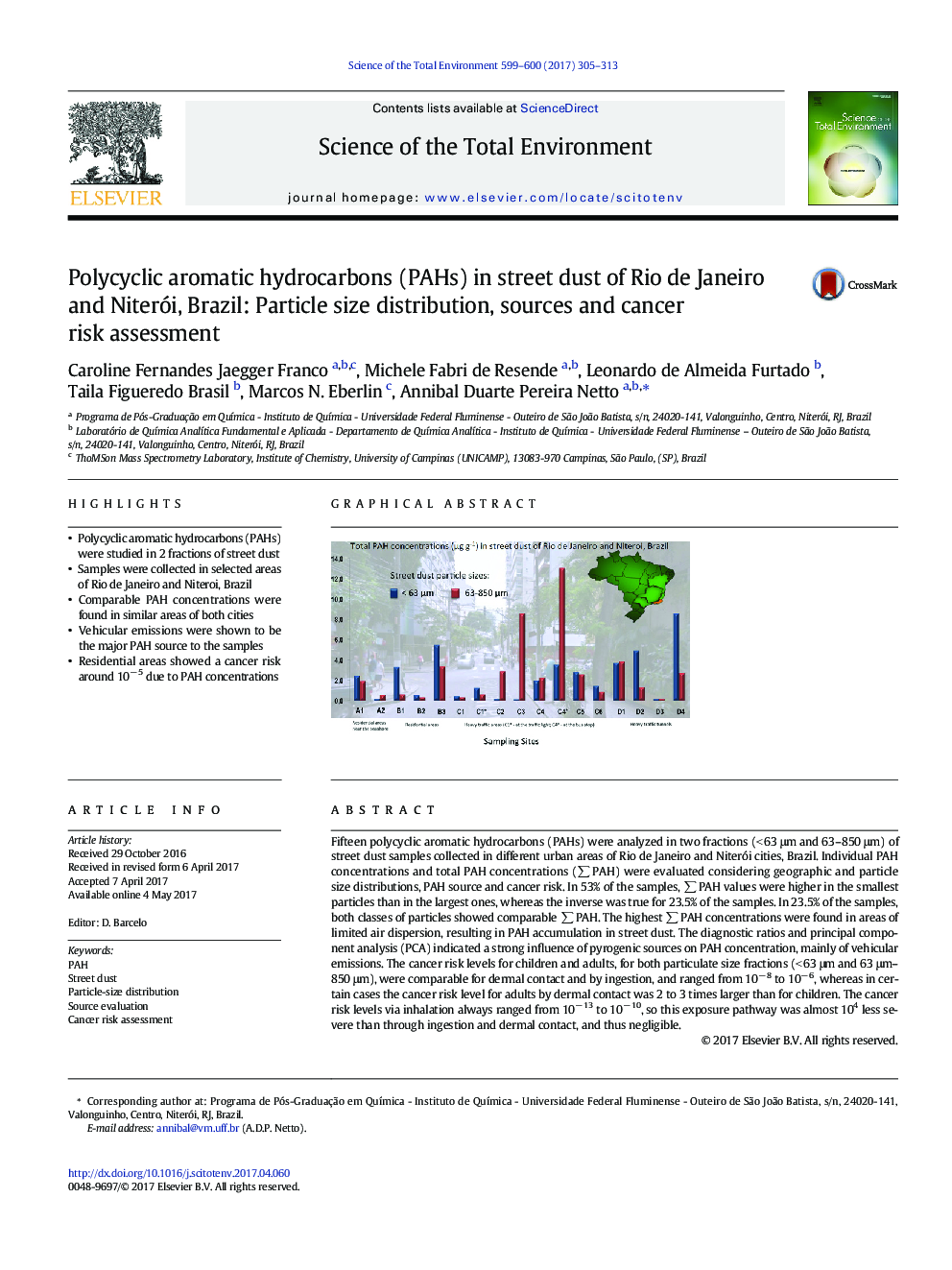| Article ID | Journal | Published Year | Pages | File Type |
|---|---|---|---|---|
| 5750496 | Science of The Total Environment | 2017 | 9 Pages |
â¢Polycyclic aromatic hydrocarbons (PAHs) were studied in 2 fractions of street dustâ¢Samples were collected in selected areas of Rio de Janeiro and Niteroi, Brazilâ¢Comparable PAH concentrations were found in similar areas of both citiesâ¢Vehicular emissions were shown to be the major PAH source to the samplesâ¢Residential areas showed a cancer risk around 10â 5 due to PAH concentrations
Fifteen polycyclic aromatic hydrocarbons (PAHs) were analyzed in two fractions (< 63 μm and 63-850 μm) of street dust samples collected in different urban areas of Rio de Janeiro and Niterói cities, Brazil. Individual PAH concentrations and total PAH concentrations (â PAH) were evaluated considering geographic and particle size distributions, PAH source and cancer risk. In 53% of the samples, â PAH values were higher in the smallest particles than in the largest ones, whereas the inverse was true for 23.5% of the samples. In 23.5% of the samples, both classes of particles showed comparable â PAH. The highest â PAH concentrations were found in areas of limited air dispersion, resulting in PAH accumulation in street dust. The diagnostic ratios and principal component analysis (PCA) indicated a strong influence of pyrogenic sources on PAH concentration, mainly of vehicular emissions. The cancer risk levels for children and adults, for both particulate size fractions (< 63 μm and 63 μm-850 μm), were comparable for dermal contact and by ingestion, and ranged from 10â 8 to 10â 6, whereas in certain cases the cancer risk level for adults by dermal contact was 2 to 3 times larger than for children. The cancer risk levels via inhalation always ranged from 10â 13 to 10â 10, so this exposure pathway was almost 104 less severe than through ingestion and dermal contact, and thus negligible.
Graphical abstractDownload high-res image (323KB)Download full-size image
